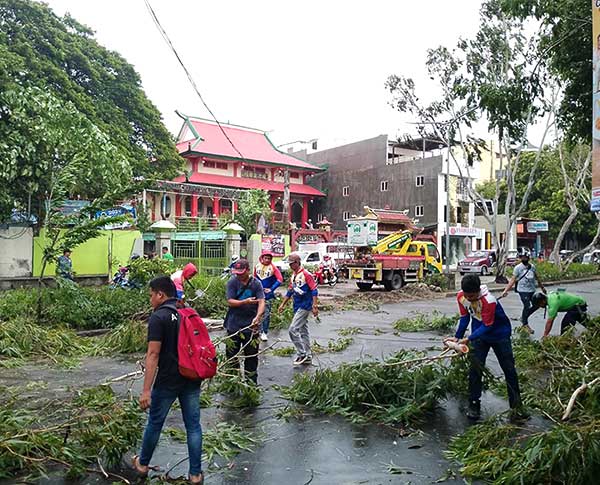
By Francis Allan L. Angelo
(UPDATED) As the Christmas season approaches, the Philippines is bracing for stronger typhoons, with the latest Philippine Climate Change Assessment (PhilCCA) report revealing alarming trends in storm intensification during this period.
Data shows a 210% rise in tropical cyclones between December and February since 2012, a sharp contrast to previous decades when this period was traditionally calmer.
This increase is further magnified in the southern Philippines, where Christmas typhoons have surged by 480%, according to Fr. Jett Villarin, a climate scientist at the Manila Observatory.
“The rise in these off-season storms is concerning, especially when combined with the overall intensification of typhoons,” Villarin said.
Typhoon Kristine, which recently battered parts of Luzon and Visayas, highlights this worrying trend.
As noted by climate experts, typhoons like Kristine are becoming more destructive due to the ongoing rise in sea surface temperatures, which provide additional fuel for these storms.
Faye Cruz, head of the Manila Observatory’s Regional Climate Systems Laboratory, emphasized that these “Christmas typhoons” are becoming more frequent and intense due to human-induced climate change.
“We are seeing the effects of global warming in our storms. The data clearly shows that these storms are not only increasing in frequency but are also bringing more rain, increasing the risk of severe flooding,” she said in a press briefing early October 2024.
In addition to the surge in typhoon numbers, rainfall linked to tropical cyclones has increased significantly—by up to 19.3% per decade since 2000, further exacerbating flood risks. This, combined with the rising sea levels, leaves the Philippines especially vulnerable, particularly its coastal and agricultural communities.
“We are witnessing the manifestation of climate change in real time,” climatologist Lourdes Tibig explained. “The increase in both temperatures and extreme weather events can no longer be ignored, especially in a country as vulnerable as the Philippines.”
These findings, detailed in the 2024 PhilCCA report, underscore the urgent need for improved disaster preparedness and climate adaptation strategies.
The report calls for investments in climate-resilient infrastructure and stronger mitigation efforts, particularly as the country faces a future with even more powerful storms.
“The Philippines is highly vulnerable to the impacts of climate change, and stronger measures are needed to protect communities,” said Dr. Rosa Perez, one of the report’s lead authors. “Every year, these storms cost lives and billions of pesos in damages. We cannot afford to wait any longer.”
The impacts of climate change differ globally, making localized climate knowledge essential for informed decision-making.
While the Intergovernmental Panel on Climate Change provides global insights, the Philippines has lacked a similar authoritative body for local climate data.
To address this, the Oscar M. Lopez Center published the Philippine Climate Change Assessment (PhilCCA), patterned after the IPCC reports.
It synthesizes local and international research to guide climate strategies and fill gaps in scientific literature.
The PhilCCA has three volumes covering physical science, impacts and vulnerability, and mitigation, with the first report released on October 14, 2024.






















